Burundi Flag Meaning
A white diagonal cross dividing the flag into alternating red and green triangles, with three red stars outlined in green in the center circle, representing unity, work, progress, and the three ethnic groups of Burundi.
- Continent
- Africa
- Adopted
- 1967
- Ratio
- 3:5
- Colors
- red, white, green
- Designer
- Unknown
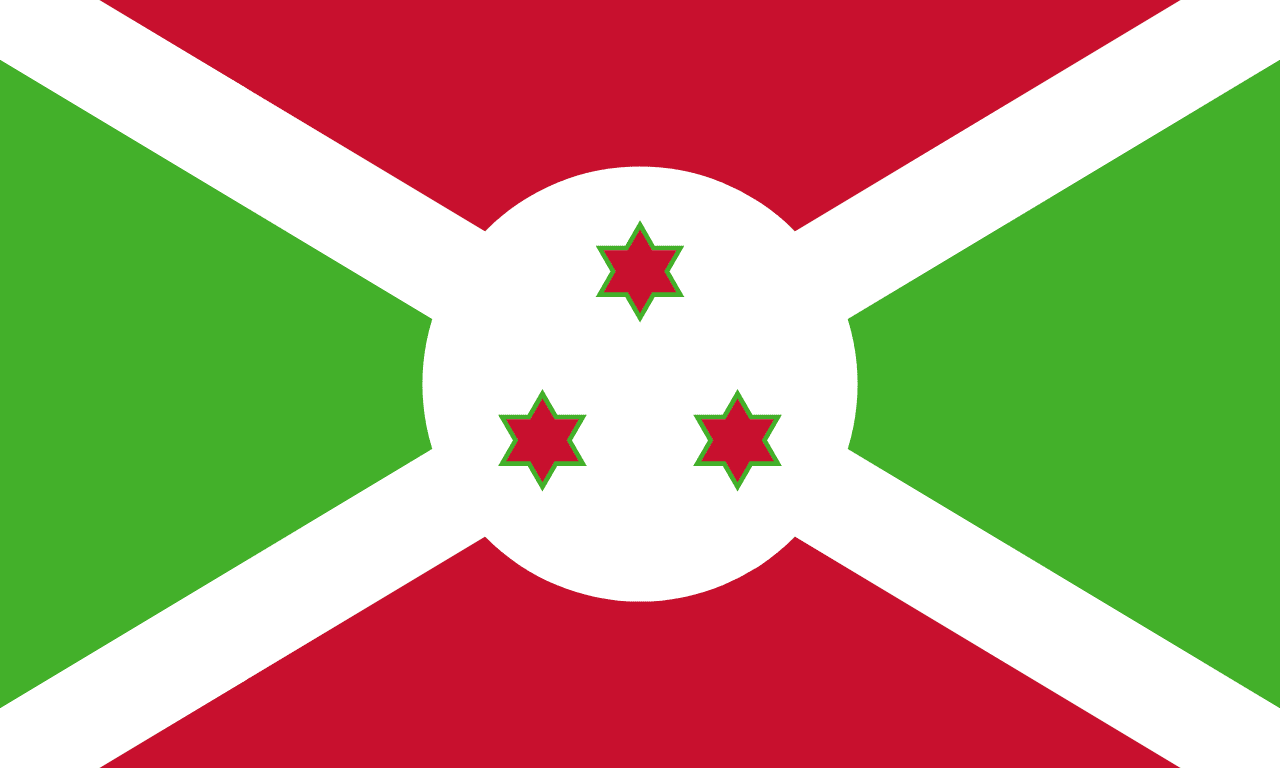
Symbolism
Red Triangles: Represent the struggle for independence and the blood shed by those who fought for the nation's freedom, symbolizing the courage and sacrifice of the Burundian people in their quest for sovereignty.
Green Triangles: Represent hope for the future and the agricultural wealth of the nation, symbolizing the fertile lands that sustain the predominantly rural population and the country's potential for development.
White Cross: Represents peace and the desire for harmony among all Burundians, serving as a symbol of unity that bridges the country's ethnic divisions and aspirations for reconciliation.
Three Stars: Represent the three main ethnic groups of Burundi - the Hutu, Tutsi, and Twa peoples - as well as the national motto 'Unity, Work, Progress,' emphasizing the importance of cooperation among all citizens.
History
- Pre-1890s: The Kingdom of Burundi existed as an independent monarchy ruled by the Ganwa princes under the Mwami (king), with a complex social structure dominated by Tutsi cattle herders and Hutu farmers.
- 1890s-1916: German East Africa included Burundi as part of Ruanda-Urundi, with minimal German presence allowing traditional structures to remain largely intact under indirect rule.
- 1916-1962: Belgium administered Ruanda-Urundi as a League of Nations mandate and later UN trust territory, gradually introducing Western education and Catholic missions while maintaining the monarchy.
- July 1, 1962: Burundi gained independence from Belgium as the Kingdom of Burundi under Mwami Mwambutsa IV, initially maintaining the traditional monarchy within a constitutional framework.
- November 28, 1966: A military coup led by Captain Michel Micombero overthrew the monarchy, establishing the Republic of Burundi and ending centuries of royal rule.
- March 27, 1967: The current flag was adopted, replacing various colonial and transitional flags with a design symbolizing the new republic's commitment to unity among ethnic groups.
- 1972: A Hutu uprising was followed by systematic massacres of educated Hutus by the Tutsi-dominated government, killing an estimated 100,000-200,000 people and forcing many into exile.
- 1987-1993: Major Pierre Buyoya came to power in a coup, later transitioning to civilian rule and implementing democratic reforms that led to multi-party elections.
- 1993-2005: Civil war erupted after the assassination of the first democratically elected Hutu president, Melchior Ndadaye, leading to over a decade of ethnic conflict that killed approximately 300,000 people.
- 2005-Present: The Arusha Peace and Reconciliation Agreement ended the civil war, establishing power-sharing arrangements and democratic institutions, though political tensions and authoritarian tendencies persist.
Trivia
- Burundi is one of the smallest countries in Africa by land area but has one of the highest population densities on the continent.
- The flag represents a landlocked country that depends heavily on neighboring countries, particularly Tanzania and the Democratic Republic of Congo, for access to seaports.
- Burundi is the source of the southernmost tributary of the Nile River, making it part of the longest river system in the world.
- The country has one of the lowest GDP per capita in the world, with over 90% of the population dependent on subsistence agriculture.
- Kirundi and French are the official languages, with Kirundi being spoken by nearly all Burundians as a unifying factor across ethnic lines.
- Coffee is Burundi's primary export crop, accounting for the majority of foreign exchange earnings despite challenges with quality and market access.
- The flag flies over a country where traditional drumming, particularly the Karyenda royal drums, plays a central role in cultural identity and ceremonies.
- Burundi has made significant progress in primary education enrollment, achieving near-universal primary school attendance despite economic challenges.
- The country is known for its long-distance runners, who have won Olympic and World Championship medals in middle and long-distance events.
- Bujumbura, the former capital and largest city, sits on the shores of Lake Tanganyika, one of the deepest and oldest lakes in the world.
- The political capital was moved to Gitega in 2019, marking a significant shift in the country's administrative geography.
- Burundi has a strong oral tradition with proverbs, folktales, and historical narratives passed down through generations without written records.
- The flag represents a country where cattle traditionally symbolized wealth and social status, particularly among the Tutsi pastoralist community.
- Despite its small size, Burundi has diverse ecosystems ranging from lakeside plains to mountain forests, supporting various wildlife species.
- The country faces significant challenges with climate change, deforestation, and soil erosion that threaten agricultural productivity and food security.
Related Countries
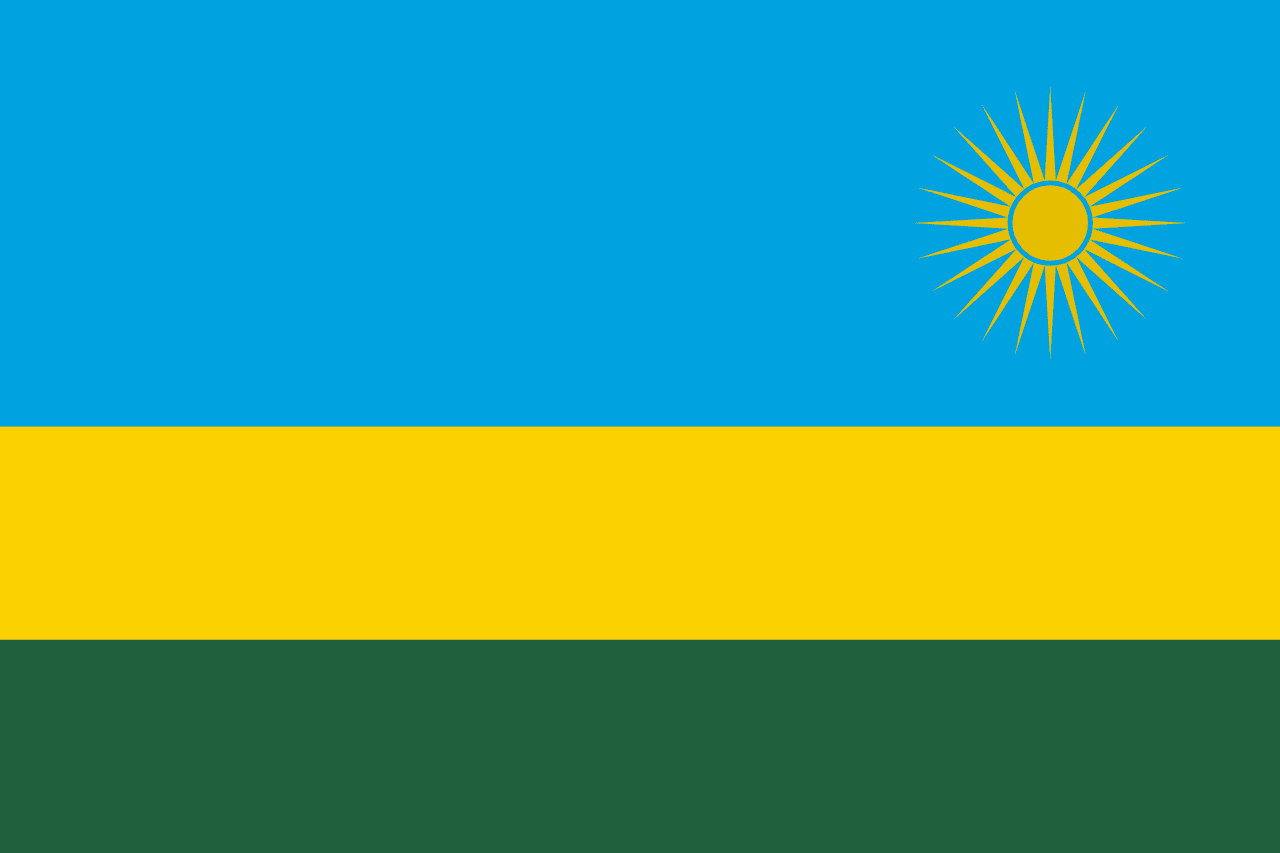
Rwanda
Africa
A tricolor of blue, yellow, and green bands with a golden sun in the upper fly corner. Adopted in 2001, the flag symbolizes unity, hope, and a new era of peace following the 1994 genocide.
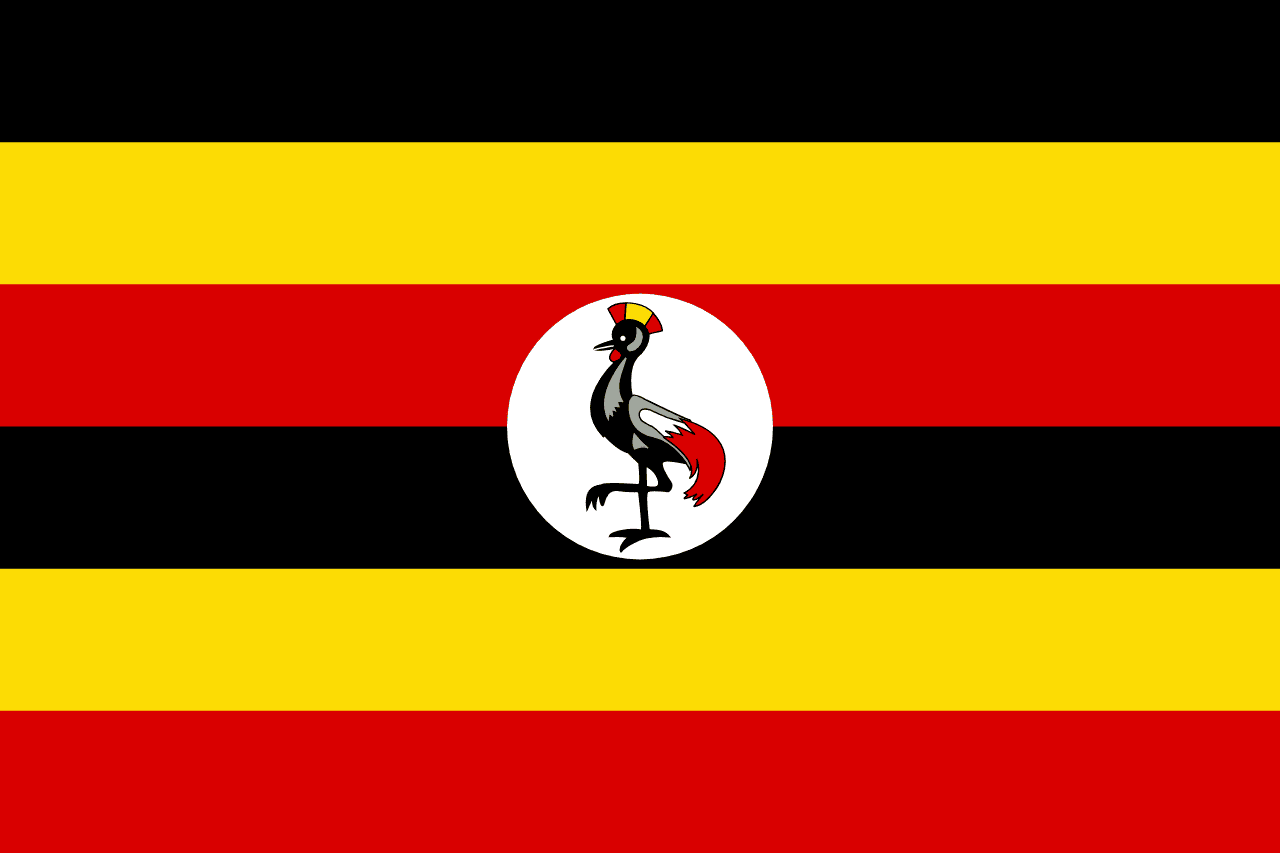
Uganda
Africa
Six horizontal stripes alternating black, yellow, and red (repeated twice) with a white circle containing the grey crowned crane in the center, representing the African people, sunshine and prosperity, brotherhood and unity, and the national bird that symbolizes Uganda's forward movement.
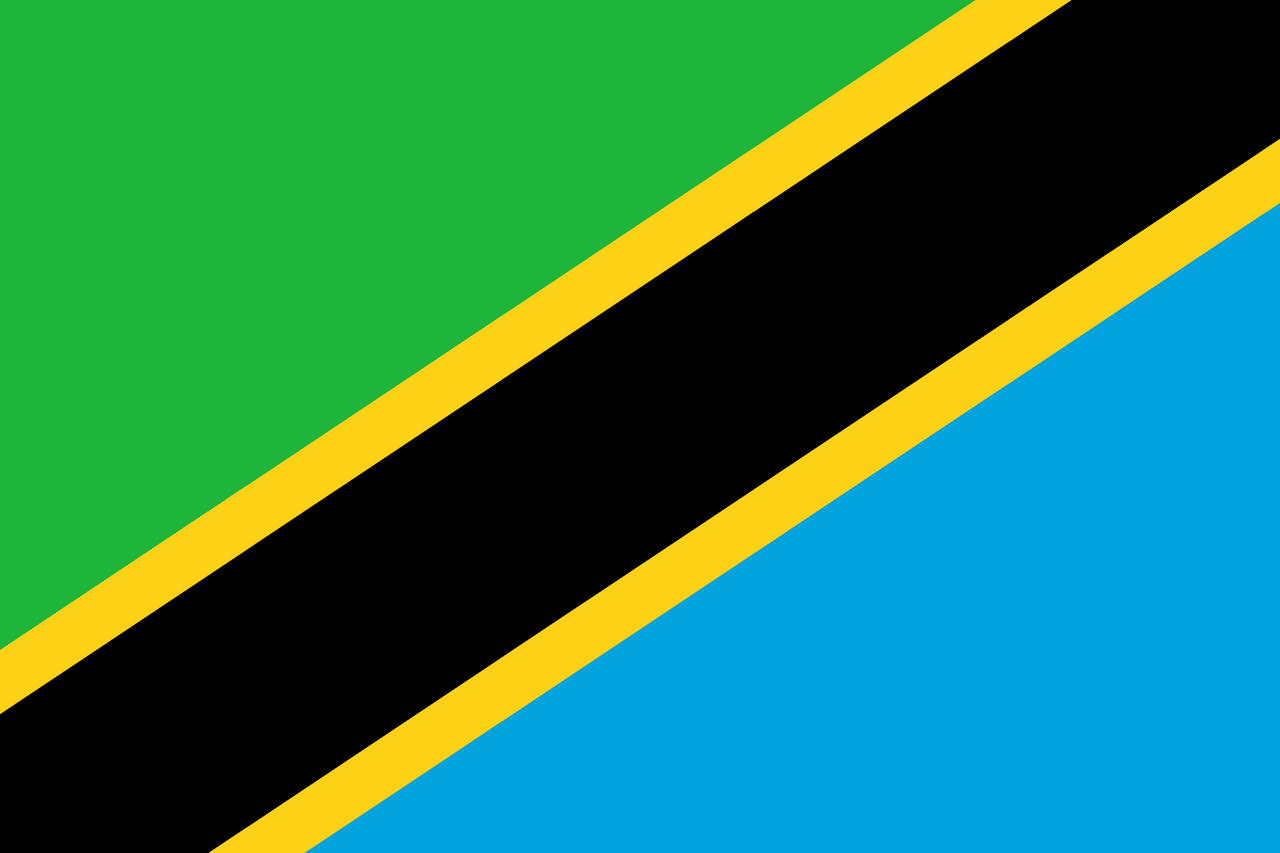
Tanzania
Africa
A green triangle in the upper hoist, a blue triangle in the lower fly, separated by a diagonal black stripe bordered by yellow stripes, representing the country's agriculture and forests, mineral wealth, the African people, and the Indian Ocean, symbolizing the union of Tanganyika and Zanzibar.
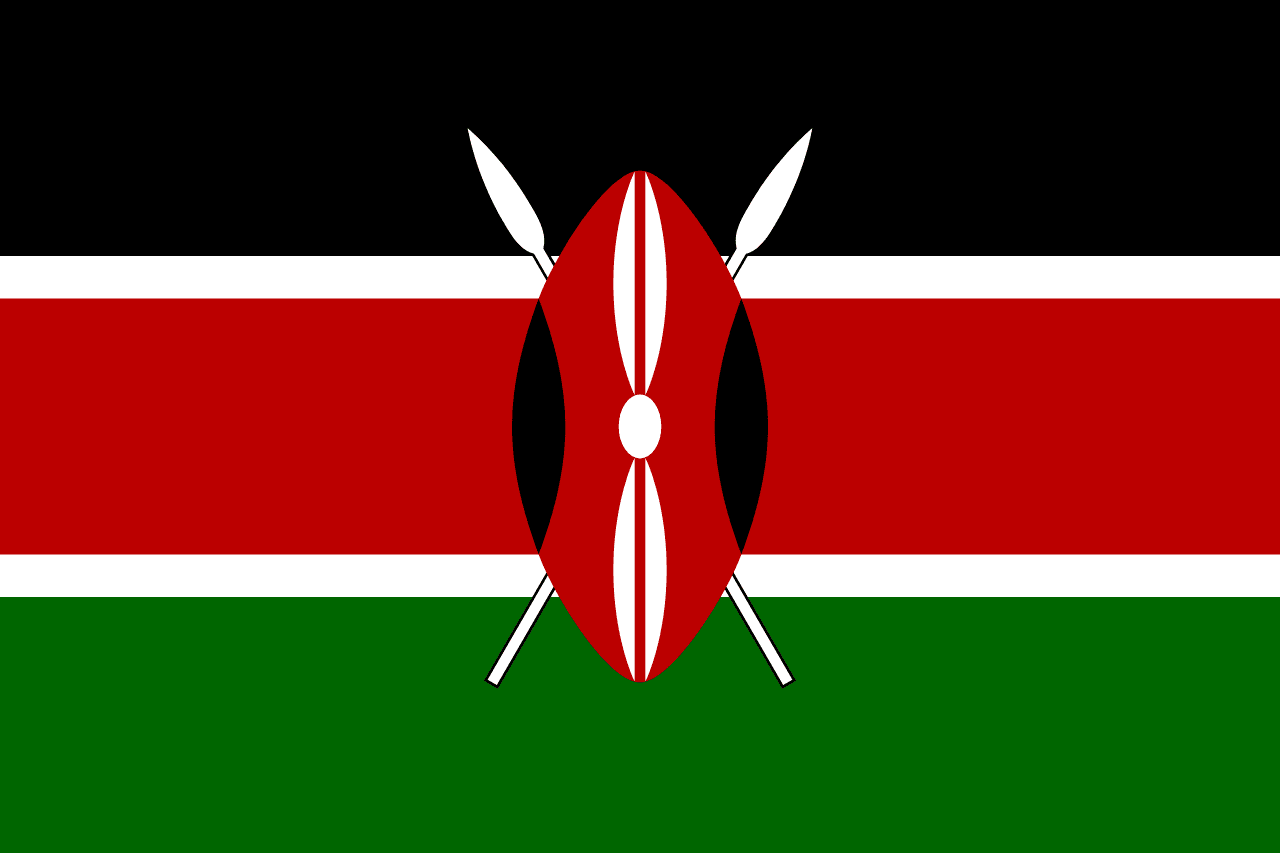
Kenya
Africa
Three horizontal stripes of black, red, and green separated by narrow white stripes, with a traditional Maasai shield and two crossed spears centered on the flag, representing Kenya's struggle for independence and the defense of freedom.
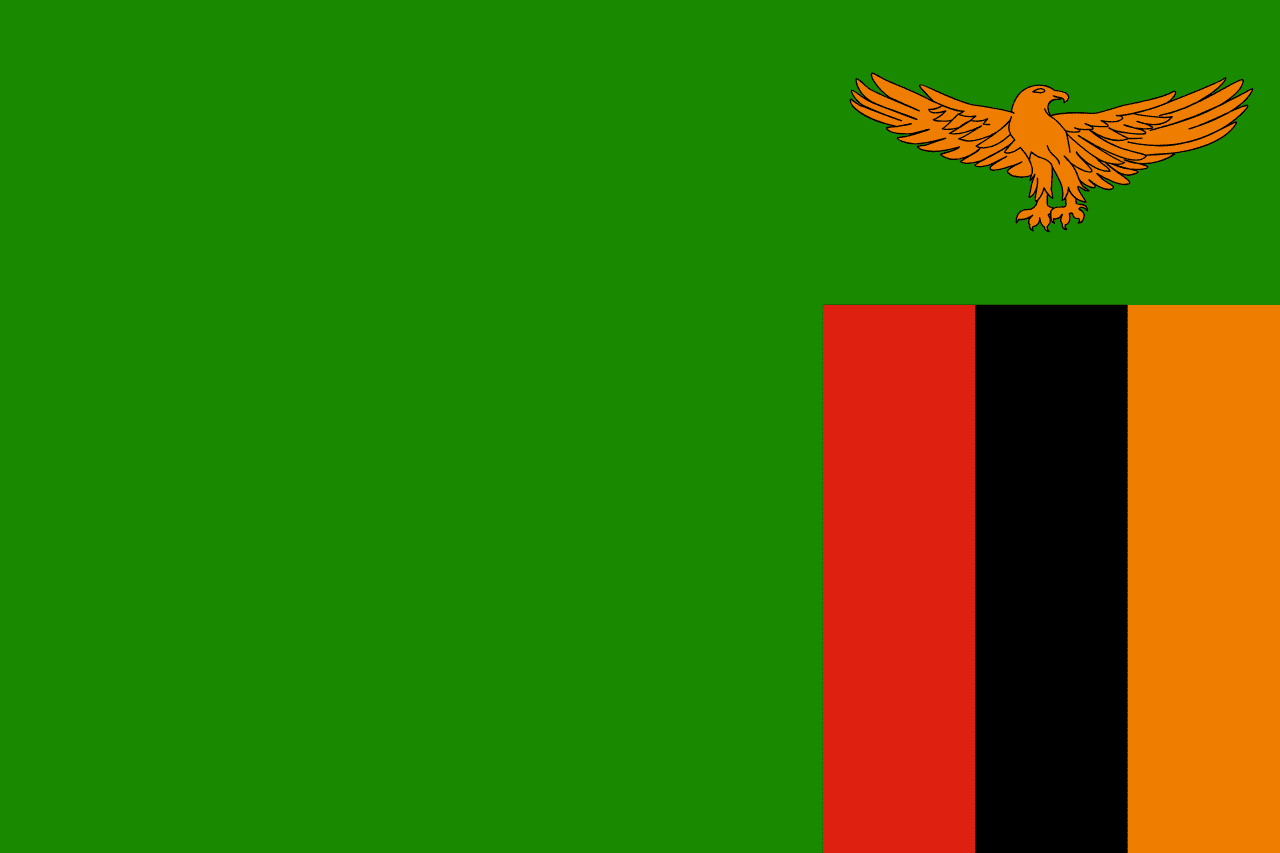
Zambia
Africa
A green field with three vertical stripes of red, black, and orange in the lower right corner and an orange eagle above the stripes, representing the country's natural wealth, the struggle for freedom, the African heritage, the mineral wealth (particularly copper), and the ability to rise above problems.
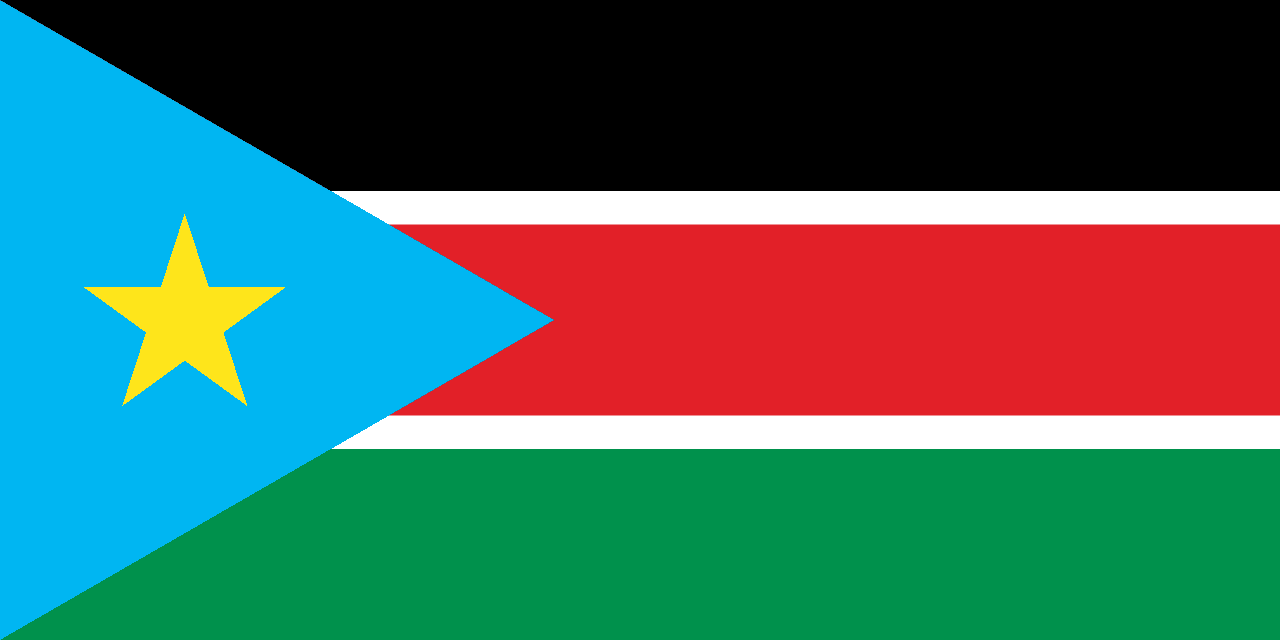
South Sudan
Africa
Three horizontal stripes of black, red, and white with a blue triangle at the hoist containing a yellow star, representing the African people, the blood shed for freedom, peace, the Nile River, and the unity of the states, designed for the world's newest country upon independence in 2011.